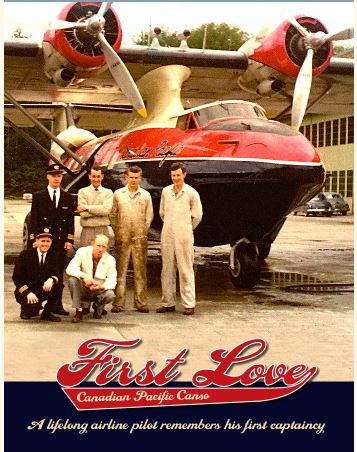By Captain Dennis Baxendale
This story is about an airplane owned by Canadian Pacific Airlines in 1958 – an amphibious aircraft built in the 1940s in Vancouver, Canada for the Royal Canadian Air Force. The aircraft was called a PBY by American fliers, a Canso by Canadians in the air force and a Catalina by the British. After the war, several Canadian-built Cansos were sold to civilian airlines and four were purchased by Canadian Pacific. Reconditioned and outfitted for up to 20 passengers,
the new configuration was actually called the “Landseair” in tribute to its amphibious capabilities, but no one called them that. Of the four ex-RCAF Cansos purchased (CF-CRP, CF-CRQ, CF-CRR and CF-CRV), CF-CRR (RCAF serial 9767) had the most outstanding combat record – with 162 Squadron, RCAF. On April 17th, 1944, under the command of Flying Officer T. Cooke, the Canso attacked and sunk the German U-boat U-342 which was on weather reporting duties south of Iceland. All 51 German sailors were lost. It was their first patrol.
My name is Dennis Baxendale and, starting in 1958, I flew Consolidated Canso CF-CRR for two years for Canadian Pacific Airlines. It was my first Captain’s job. I was 26, with a 1000 hrs Pilot-in-Command time on small aircraft. Canadian Pacific operated a passenger service out of the harbour in Prince Rupert (CYPR), British Columbia on the West coast of Canada to the community of Sandspit (CYZP) on the Queen Charlotte Islands.
The land planes (Convair 240 or DC-6B) met us at Sandspit where we transferred the passengers for their trip down to Vancouver. It was 94 miles across to Sandspit and we generally never flew over 4000 feet. Canadian Pacific Airlines was a subsidiary of the Canadian Pacific Railroad, which had helped Canada become a nation building a railroad from the Atlantic to the Pacific.Read More

